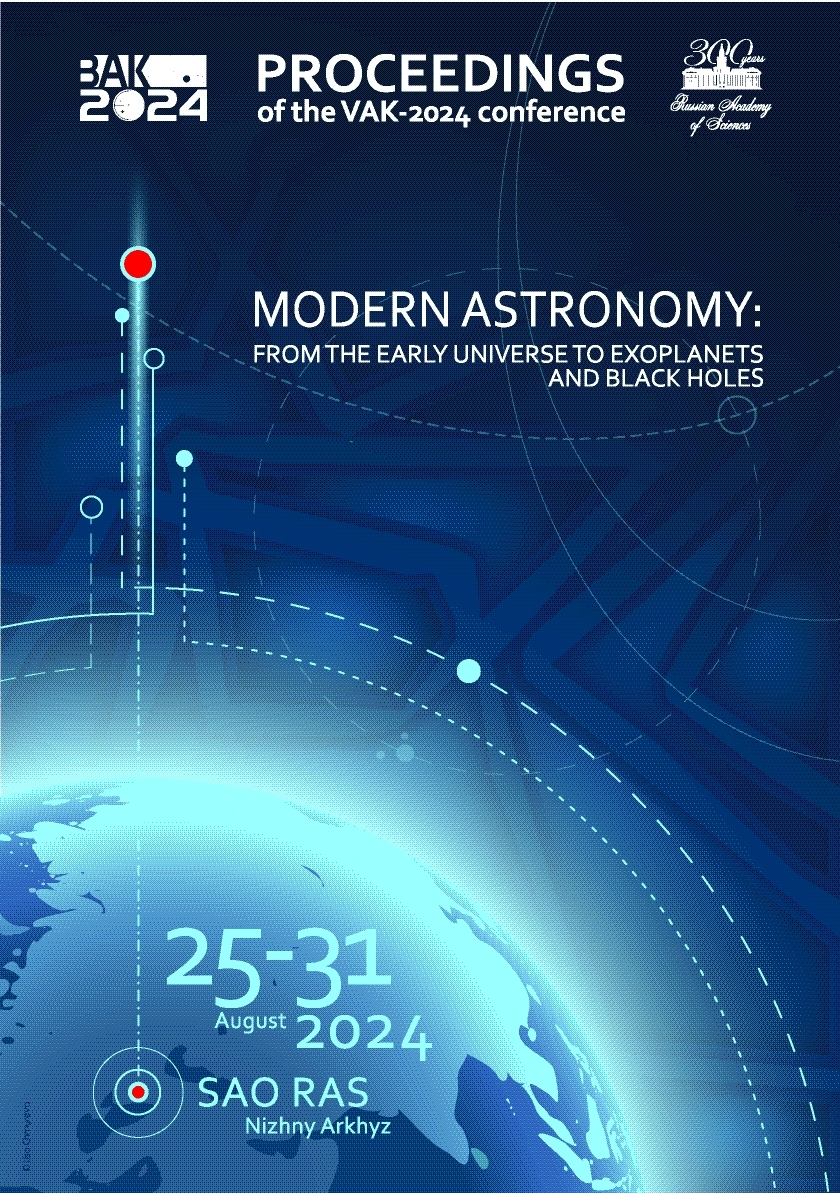UDC 53
UDC 520
UDC 521
UDC 523
UDC 524
UDC 52-1
UDC 52-6
CSCSTI 41.00
CSCSTI 29.35
CSCSTI 29.31
CSCSTI 29.33
CSCSTI 29.27
CSCSTI 29.05
Russian Classification of Professions by Education 03.06.01
Russian Classification of Professions by Education 03.05.01
Russian Classification of Professions by Education 03.04.03
Russian Library and Bibliographic Classification 2
Russian Library and Bibliographic Classification 223
Russian Trade and Bibliographic Classification 614
Russian Trade and Bibliographic Classification 6135
BISAC SCI004000 Astronomy
BISAC SCI005000 Physics / Astrophysics
Using modern radio, infrared and optical sky surveys, hosts have been found for the vast majority of radio sources detected by the Cold experiment and included in the RATAN Cold Refined (RCR) catalog. In this paper, we present details of the optical identification of one of the objects in the RCR catalog – a double radio source RCR J090511.74+045536.8. Initially, we matched it with the to SDSS J090511.94+045537.6, which we assumed to be a supernova that exploded in the host galaxy of the radio source. This hypothesis had to be abandoned, however, as to its properties the SDSS database indicated that it was an asteroid. Searching for the host galaxy of the radio source in deeper optical surveys allowed us to detect an object fainter than $r\approx 26^m$ at the expected location of the host relative to the radio source lobes. We cannot use the selection criteria for Lyman-Break Galaxies (LBG) due to the faintness of the host, but we can assume that the object can be classified as one of them, since it is detected in the r-filter and brighter in the i-filter, but is absent in other filters. Then its estimated host redshift may be greater than $z\gtrsim 4-5$, making it a candidate for the most distant radio galaxies.
galaxies: active, high redshift
1. Abazajian K.N., Adelman-McCarthy J.K., Agüeros M.A., et al., 2009, Astrophys. J., Suppl. Ser., 182, p. 543
2. Aihara H., AlSayyad Y., Ando M., et al., 2022, Publ. Astron. Soc. Jpn., 74, p. 247
3. Bonnarel F., Fernique P., Bienaymé O., et al., 2000, Astron. Astrophys., Suppl. Ser., 143, p. 33
4. Chambers K.C., Magnier E.A., Metcalfe N., et al., 2016, arXiv e-prints, arXiv:1612.05560
5. Dey A., Schlegel D.J., Lang D., et al., 2019, Astron. J., 157, id. 168
6. Duncan K.J., 2022, Mon. Not. R. Astron. Soc., 512, p. 3662
7. Gaia Collaboration, Vallenari A., Brown A.G.A., et al., 2023, Astron. Astrophys., 674, id. A1
8. Gordon Y.A., Boyce M.M., O’Dea C.P., et al., 2021, Astrophys. J., Suppl. Ser., 255, id. 30
9. Hale C.L., McConnell D., Thomson A.J.M., et al., 2021, Publ. Astron. Soc. Aust., 38, is. e058
10. Helfand D.J., White R.L., Becker R.H., 2015, Astrophys. J., 801, id. 26
11. Kapahi V.K., 1987, Observational Cosmology, 124, p. 251
12. Lawrence A., Warren S.J., Almaini O., et al., 2007, Mon. Not. R. Astron. Soc., 379, p. 1599
13. Pariiski I.N., Bursov N.N., Lipovka N.M., et al., 1991, Astron. Astrophys., Suppl. Ser., 87, p. 1
14. Parijskij Y.M., Bursov N.M., Lipovka N.M., et al., 1993, Astron. Astrophys., Suppl. Ser., 98, p. 391
15. Parijskij Y.N., Goss W.M., Kopylov A.I., et al., 1996, Bulletin of the Special Astrophysics Observatory, 40, p. 5
16. Parijskij Y.N. and Korol’kov D.V., 1987, Astrophysics and Space Physics Review, 5, p. 39
17. Saxena A., Marinello M., Overzier R. A., et al., 2018, Mon. Not. R. Astron. Soc., 480, p. 2733
18. Snellen I.A.G., Bremer M.N., Schilizzi R.T., et al., 1996, Mon. Not. R. Astron. Soc., 279, p. 1294
19. Soboleva N.S., Majorova E.K., Zhelenkova O.P., et al., 2010, Astrophysical Bulletin, 65, p. 42
20. Taylor M.B., 2005, Astronomical Society of the Pacific Conference Series, 347, p. 29
21. Vitkovskij V.V., Zhelenkova O.P., Karachentsev I.D., et al., 1987, Soobshcheniya Spetsial’noj Astrofizicheskoj Observatorii, 53, p. 86
22. Zhelenkova O.P. and Kopylov A.I., 2008, Astrophysical Bulletin, 63, p. 346
23. Zhelenkova O.P. and Kopylov A.I., 2009, Astrophysical Bulletin, 64, p. 109
24. Zhelenkova O.P., Soboleva N.S., Majorova E.K., et al., 2013, Astrophysical Bulletin, 68, p. 26
25. Zhelenkova O.P., Soboleva N.S., Temirova A.V., et al., 2017, Astrophysical Bulletin, 72, p. 150






